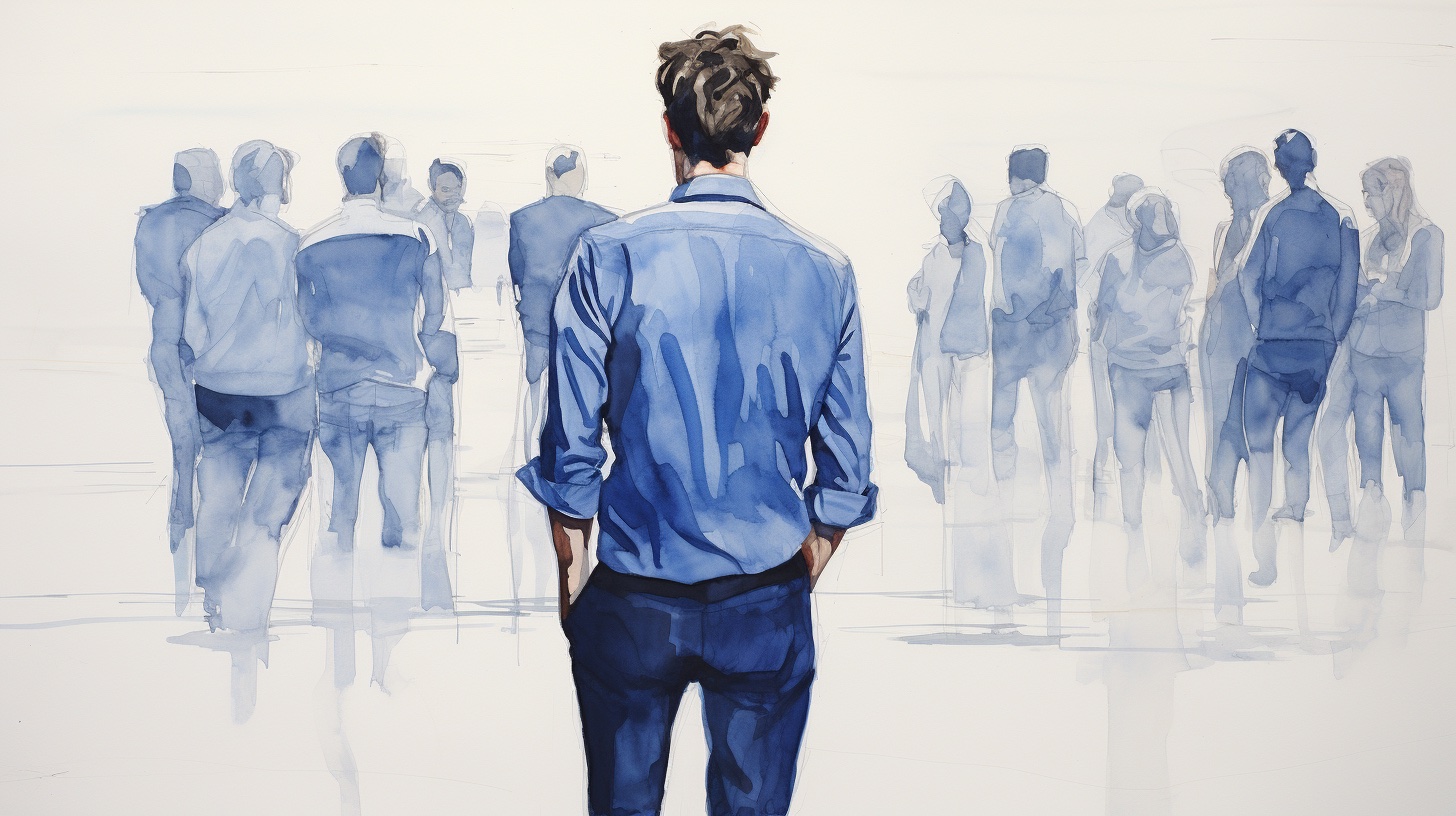Social anxiety disorder (SAD) and obsessive-compulsive disorder (OCD) are both anxiety disorders that can co-occur in some individuals. Although the two disorders are distinct, there is a connection between them in some cases.
Research has found that people with social anxiety disorder may be at a higher risk of developing OCD compared to the general population. One study found that about 25% of people with OCD also met the diagnostic criteria for SAD, and that social anxiety symptoms were associated with more severe OCD symptoms.
Why do people with Social Anxiety have higher risk for OCD?
One possible explanation for this co-occurrence is that people with SAD may engage in compulsive behaviors as a way of coping with their anxiety. For example, they may repeatedly check or seek reassurance from others to reduce their anxiety about a social situation. Over time, these behaviors can become habitual and may evolve into symptoms of OCD.
Another possible explanation is that both disorders share some common underlying mechanisms, such as heightened sensitivity to threat and difficulty tolerating uncertainty. In some cases, these shared vulnerabilities may increase the likelihood of developing both disorders.
Overall, while social anxiety disorder and OCD are distinct disorders, they can co-occur in some individuals.
If you are experiencing symptoms of either disorder, it is important to seek the help of a mental health professional for proper diagnosis and treatment.
Some facts and figures
Here are some interesting figures about social anxiety:
- Social anxiety disorder is the third most common mental health disorder after depression and alcohol dependence.
- According to the National Institute of Mental Health, an estimated 12.1% of U.S. adults experience social anxiety disorder at some point in their lives.
- Women are more likely to experience social anxiety disorder than men.
- Social anxiety disorder usually develops in childhood or adolescence, with a median age of onset of 13 years old.
- People with social anxiety disorder are more likely to have other mental health conditions, such as depression, substance abuse, and other anxiety disorders.
- Social anxiety disorder can be treated with a combination of medication and therapy, and up to 80% of people with the disorder can be effectively treated.
- Despite effective treatments being available, only about one-third of people with social anxiety disorder seek treatment.
These figures highlight the importance of recognizing social anxiety disorder as a common and treatable mental health condition.
CBT and Social Anxiety
Cognitive-behavioral therapy (CBT) is an evidence-based treatment for social anxiety disorder (SAD) that aims to help individuals identify and change negative patterns of thinking and behavior that contribute to their anxiety. There are several CBT-based strategies that can be used to improve resilience in people with social anxiety:
- Cognitive restructuring: This technique involves identifying and challenging negative thoughts or beliefs that contribute to social anxiety. By examining evidence and generating more balanced and realistic thoughts, individuals can reduce their anxiety and build resilience.
- Exposure therapy: This technique involves gradually exposing individuals to social situations that they fear in a safe and controlled manner. By facing their fears and learning that they can cope with anxiety, individuals can build resilience and increase their confidence in social situations.
- Behavioral experiments: This technique involves testing out new behaviors or beliefs in social situations to see how they affect anxiety levels. By experimenting with different approaches, individuals can learn what works for them and build resilience.
- Mindfulness: This technique involves practicing present-moment awareness and non-judgmental acceptance of thoughts and emotions. By learning to be more accepting of their anxiety, individuals can reduce the impact of anxiety on their daily lives and build resilience.
Cognitive themes related to Social Anxiety
Some specific cognitive themes that can be targeted in CBT for social anxiety include:
- Fear of negative evaluation: This is a common cognitive theme in social anxiety, and involves a belief that others will judge, criticize, or reject the individual. By challenging this belief and learning to tolerate uncertainty and rejection, individuals can build resilience.
- Safety behaviors: These are behaviors that individuals use to reduce anxiety in social situations, such as avoiding eye contact or rehearsing what they will say. By learning to reduce these safety behaviors, individuals can build resilience and increase their confidence in social situations.
- Catastrophic thinking: This is a cognitive distortion that involves imagining the worst-case scenario in social situations. By learning to challenge catastrophic thinking and generate more realistic thoughts, individuals can reduce their anxiety and build resilience.
Overall, CBT-based strategies for improving resilience in people with social anxiety involve identifying and changing negative patterns of thinking and behavior. By learning new skills and challenging negative beliefs, individuals can build resilience and increase their confidence in social situations.

